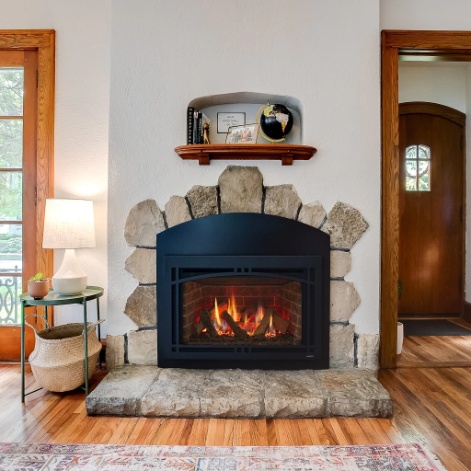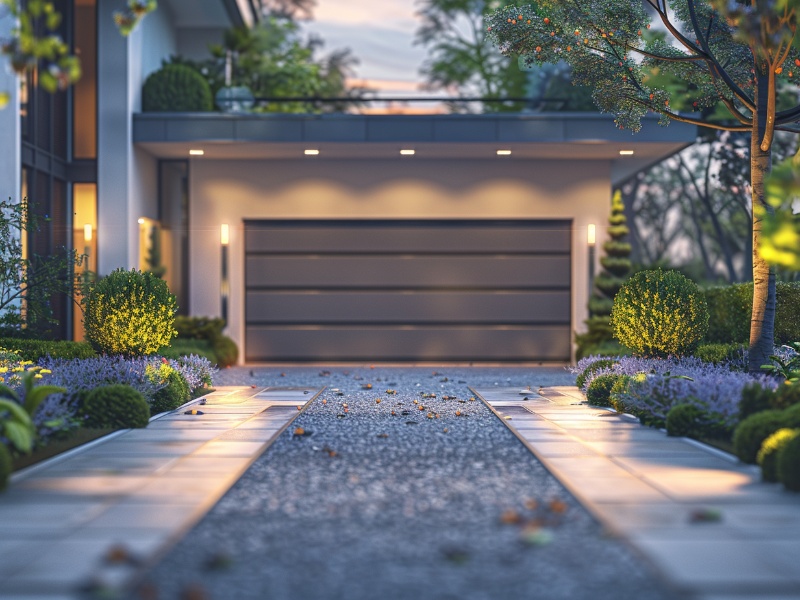Table of Contents
- 1 What Are Garage Door Windows Inserts?
- 2 Why Should You Consider Adding Garage Door Windows Inserts?
- 3 What Are The Factors To Consider Before Choosing Garage Door Windows Inserts?
- 4 How Can You Install Garage Door Windows Inserts?
- 5 What Are The Maintenance Tips For Garage Door Windows Inserts?
- 6 Frequently Asked Questions
Are you looking to enhance the look and functionality of your garage door? Garage door window inserts may be the perfect solution for you.
In this article, we will explore the different types of garage door window inserts available, the benefits of adding them to your garage door, and the factors to consider before making a choice. Adding garage door window inserts can greatly improve the overall appearance of your garage door and increase natural light in your garage.
There are various types of garage door window inserts to choose from, including:
- Single pane inserts
- Double pane inserts
- Decorative inserts
Each type offers its own unique benefits and can be customized to fit your specific needs and preferences.
Before making a decision, it’s important to consider factors such as:
- Material
- Size and shape
- Privacy level
Proper installation is crucial for the functionality and longevity of your garage door window inserts. Follow these simple steps for a successful installation:
- Clean the area where the insert will be placed
- Measure and mark the placement of the insert
- Drill holes for the insert’s screws
- Secure the insert in place
Maintaining your garage door window inserts is easy and can help prolong their lifespan. Here are some tips to keep them looking great:
- Regularly clean the inserts with a mild soap and water solution
- Avoid using harsh chemicals or abrasive materials
- Inspect for any damage or wear and tear
With the right garage door window inserts, you can enhance the look and functionality of your garage door while also increasing natural light and improving the overall aesthetic of your home. So why wait? Brighten up your garage experience today!
What Are Garage Door Windows Inserts?
Garage door window inserts are decorative elements that enhance the style and design of a garage door, providing customization options for both residential and commercial properties.
These inserts are durable and versatile, offering a practical addition to any garage.
They come in a variety of designs, from traditional to contemporary, giving property owners the ability to match the insert with the overall aesthetic of their property.
In addition to adding visual appeal, these inserts also allow natural light to enter the garage space, creating a brighter and more welcoming atmosphere inside.
Whether it’s a modern home or a commercial building, garage door window inserts can be customized to fit different property types, making them a versatile option for improving curb appeal and functionality.
What Are The Different Types Of Garage Door Windows Inserts?
Garage door window inserts come in a variety of materials such as glass, plastic, aluminum, and wood, offering different sizes, shapes, and decorative options to complement the overall design of the garage door.
Glass window inserts are popular for their sleek and modern look, providing a transparent view while allowing natural light to filter into the garage space. Plastic inserts, on the other hand, offer durability and are often more budget-friendly.
Aluminum window inserts are known for their strength and resistance to corrosion, making them ideal for harsh weather conditions. Wood inserts add a touch of warmth and traditional charm to the garage door, enhancing its curb appeal with a classic aesthetic.
Why Should You Consider Adding Garage Door Windows Inserts?
Adding garage door window inserts can brighten the garage space, enhance the overall garage experience by increasing natural light, boosting curb appeal, improving security, and adding a touch of weather-resistant style that can increase the home’s value.
The introduction of window inserts not only brightens up the garage area but also creates a more inviting environment. By allowing natural light to flow in, these inserts significantly improve visibility inside the garage, making it easier and safer to navigate the space during the day.
The enhanced aesthetic appeal provided by well-designed window inserts can make a notable difference in the overall look of the property and elevate its curb appeal. From a practical standpoint, the security benefits offered by these inserts can provide homeowners with peace of mind, while their weather-resistant features ensure long-lasting durability that adds value to the home.
Increases Natural Light
Garage door window inserts play a crucial role in increasing natural light within the garage, creating a well-lit interior space that enhances both the exterior and interior aesthetics of the property.
The strategic placement of these window inserts allows sunlight to filter into the garage, reducing the dependency on artificial lighting during the day. This not only helps in cutting down energy costs but also provides a more welcoming atmosphere inside.
The enhanced lighting also extends to the exterior of the garage, adding a touch of sophistication and curb appeal to the overall look of the property. By maximizing natural light, these inserts contribute to a brighter, more visually appealing garage environment.
Improves Curb Appeal
By installing garage door window inserts, you can significantly improve the curb appeal of your property. This upgrade enhances the visual appeal and elevates the overall exterior design, adding a touch of aesthetic charm to the garage door.
Window inserts are available in a variety of styles, sizes, and designs, making it easy to find ones that match the architectural style of your home. By adding window inserts, you can enhance the appearance of your property and make a positive first impression on guests and passersby.
The natural light that filters through the windows can also brighten up your garage space, creating a more open and airy atmosphere. This simple upgrade can have a significant impact on the overall look of your home’s exterior, increasing its curb appeal and overall aesthetics.
Enhances Ventilation
Garage door window inserts not only enhance the visual appeal but also add to the ventilation of the garage space, transforming it into a more airy and comfortable environment that may require fewer upgrades and less upkeep over time.
The increased airflow facilitated by these window inserts helps in reducing stagnant air and moisture buildup within the garage.
By allowing fresh air to circulate more freely, the inserts contribute to a healthier environment for belongings stored in the garage.
This improved ventilation can also potentially lower the instances of musty smells and mildew formation, enhancing the overall comfort and usability of the space without the need for costly modifications or extensive maintenance tasks.
Provides Aesthetic Appeal
Apart from their functional benefits, garage door window inserts introduce an aesthetic appeal that can blend modern and traditional elements, offering a practical addition that is both visually appealing and weather-resistant.
These innovative inserts seamlessly combine sleek modern design with classic traditional aesthetics, creating a striking visual contrast that elevates the exterior aesthetics of any property.
Their ability to merge contemporary styles with timeless charm makes them a versatile choice for homeowners looking to enhance their curb appeal.
The weather-resistant features of these window inserts ensure durability and longevity, adding value to the overall functionality of the garage door while maintaining its elegant appearance.
What Are The Factors To Consider Before Choosing Garage Door Windows Inserts?
Before selecting garage door window inserts, it is essential to consider various factors such as the material, style, size, and privacy requirements to ensure they align with your design preferences and functional needs.
The material of the window inserts plays a crucial role in determining their durability and maintenance needs. Materials like glass, acrylic, or plastic offer different levels of insulation, security, and resistance to weather elements.
When it comes to style choices, you can opt for traditional designs, modern patterns, or decorative accents to complement the overall aesthetic of your garage door. Pay attention to the size of the inserts to ensure they fit seamlessly with the door’s dimensions, enhancing its visual appeal. Privacy needs can be addressed through frosted or tinted options, striking a balance between natural light and seclusion.
Material
The choice of material for garage door window inserts, whether glass, plastic, aluminum, or wood, significantly influences their durability, weather-resistance, and overall aesthetic appeal, making it a crucial factor to consider during selection.
Each material has its own unique properties that affect how well it stands up to various weather conditions.
For example, aluminum is known for its strength and resistance to rust, making it ideal for areas prone to high moisture.
On the other hand, glass provides a sleek and modern look, allowing natural light to filter through.
Plastic inserts are lightweight and low-maintenance, suitable for those looking for a budget-friendly option.
Wood inserts, while offering a classic and warm aesthetic, may require more upkeep to maintain their appearance over time.
Style
The style of garage door window inserts plays a key role in defining the overall design aesthetic, offering customization options that can blend a traditional look with a modern touch, enhancing the visual appeal of the garage door.
Different styles of window inserts can completely transform the appearance of a garage door. This allows homeowners to personalize their space according to their taste and preferences.
By incorporating these diverse styles, the door’s design can range from classic and elegant to sleek and contemporary. This caters to various architectural themes and creates a unique and eye-catching visual statement that adds character and charm to the exterior of the home.
Size
Choosing the right size for your garage door window inserts is crucial as it determines the visual proportions, shapes, and customization possibilities. This provides a versatile option to tailor the inserts to your specific design preferences.
Optimizing the size of your garage door window inserts can greatly enhance the overall appearance of your home. It can affect the visual balance of your garage door and complement the architectural style of your property.
With a range of sizes available, you can also choose from various shapes, such as rectangular or arched designs, to match your personal preferences. The size of the inserts also plays a role in the level of customization, allowing for intricate patterns or simpler, more minimalist designs.
Privacy
When considering garage door window inserts, it’s important to think about the level of privacy they offer. This includes factors such as transparency, UV protection, and safety features. By carefully considering these elements, you can ensure that your choice aligns with your privacy needs and enhances the overall security of your property.
Garage door window inserts play a crucial role in finding the right balance between privacy and visibility. With the right insert, you can control how much natural light enters your garage while also protecting against prying eyes.
The level of transparency of the inserts affects visibility from both inside and outside the property. This makes it crucial to choose inserts that provide the desired level of discretion. Additionally, factors such as UV protection not only maintain privacy but also preserve the longevity of items stored in the garage.
How Can You Install Garage Door Windows Inserts?
Installing garage door window inserts can be a DIY project for both residential and commercial properties. The process is simple and involves measuring and marking the placement, cutting out the hole, and securely installing the window inserts.
To begin, use a tape measure to accurately measure the desired location on your garage door for the window inserts. Then, mark the outline of the insert on the door using a pencil or marker.
Once you have the measurements and outline marked, carefully cut out the marked area using appropriate tools like a jigsaw for a clean and accurate cut. Then, insert the window piece into the cut-out area and secure it in place following the manufacturer’s instructions for a professional finish.
Remember: you can always call the pros at Dreifuss for help. Contact us today for all of your garage door window insert needs!
Measure And Mark The Placement
The first step in installing garage door window inserts is to accurately measure and mark the placement on the garage door to ensure precise installation and alignment for a seamless integration.
Proper measurement and marking are essential as they lay the foundation for the entire installation process. By taking precise measurements, you can guarantee that the window inserts will fit flawlessly into the designated spaces without any gaps or misalignments.
Marking the exact positions ensures that the inserts are placed symmetrically and in alignment with the overall design of the garage door. This meticulous attention to detail not only enhances the aesthetic appeal of the door but also promotes functionality and durability in the long run.
Cut Out The Hole
Once the placement is marked, carefully cut out the hole on the garage door according to the measurements, ensuring a clean and precise opening for the window insert installation that will require minimal upkeep in the future.
To ensure accuracy in cutting the hole, using a jigsaw or reciprocating saw with a fine-tooth blade is recommended for a smooth finish. After cutting, clean any rough edges with sandpaper to guarantee a neat appearance.
When installing the window insert, follow the instructions provided meticulously to ensure a proper fit. The benefit of these well-fitted inserts is that they require minimal maintenance compared to traditional windows, reducing the need for constant repairs and refinishing. This durability adds value to your garage door while enhancing its aesthetics.
Install The Window
To optimize the installation process and ensure long-term functionality and durability, it’s crucial to securely install the garage door window insert. This involves careful placement in the prepared hole and proper alignment with the edges of the opening.
Using high-quality silicone sealant, seal around the edges of the insert to prevent any air or water leakage. Smooth out the sealant for a clean, finished look and inspect for any gaps or uneven spots. Make necessary adjustments and apply additional sealant if needed.
Finally, add any finishing touches to enhance the appearance and durability of the window insert. By following these steps, you can achieve a secure and well-aligned installation that adds both functionality and aesthetic appeal to your garage door.
What Are The Maintenance Tips For Garage Door Windows Inserts?
Maintaining garage door window inserts is essential for their longevity and performance. This involves regular cleaning, thorough inspection for damage, and timely repainting if necessary to preserve their weather-resistant qualities.
Regular cleaning of garage door window inserts should be done with a mild detergent and water to prevent dirt and grime buildup. Inspecting the inserts for any cracks or chips is crucial to ensure they remain secure and functional.
If any damage is detected, it should be promptly repaired to maintain the integrity of the window inserts. Repainting the inserts periodically can help protect them from harsh weather conditions, ensuring they continue to provide insulation and aesthetic appeal to your garage.
Clean Regularly
Regular cleaning of garage door window inserts is essential to maintain their appearance, functionality, and weather-resistant properties, ensuring their longevity and optimal performance over time.
Keeping your garage door window inserts clean not only enhances the curb appeal of your home but also prevents dirt and grime from affecting the functionality of the windows.
These inserts are designed to withstand various weather conditions, and regular cleaning helps in preserving their weather-resistant features, preventing deterioration over time.
To effectively clean the window inserts, use a mild detergent mixed with water and a soft brush to remove any buildup.
Establishing a regular cleaning schedule, such as monthly or quarterly, can help you stay on top of maintenance and ensure that your garage door windows stay in top condition.
Inspect For Damage
Periodic inspection for damage on garage door window inserts is crucial to identify any issues early, address safety concerns, and ensure timely repairs or replacements to maintain the integrity and security of the garage.
Regularly checking the window inserts is crucial for homeowners to catch any signs of wear and tear before they escalate into major problems. This involves examining the frames, glass, and overall condition of the inserts.
By doing so, potential safety hazards and costly repairs can be prevented. It is important to look for cracks, chips, or loose fittings in the window inserts, as these can compromise the structural strength of the garage door.
Engaging in proactive maintenance practices not only enhances the aesthetics of the door, but also prolongs its lifespan and functionality.
Repaint If Necessary
If the paint on garage door window inserts shows signs of wear or damage, repainting them when necessary is crucial to maintain their weather-resistant properties, aesthetics, and overall visual appeal for an extended lifespan.
Repainting your window inserts can greatly improve the appearance of your home and provide protection against harsh weather. Begin by thoroughly cleaning the surfaces to remove any dirt or debris. Then, select a high-quality paint that offers durability and weather resistance for a long-lasting finish.
Applying the paint evenly and allowing proper drying times are crucial for achieving a professional-looking result and extending the lifespan of your garage door window inserts.
Frequently Asked Questions
1. What are garage door window inserts?
Garage door window inserts are small glass panels that can be inserted into the design of your garage door. They are available in various shapes, sizes, and styles, and can be used to add both functionality and aesthetic appeal to your garage door.
2. How do garage door window inserts brighten your garage experience?
Garage door window inserts allow natural light to enter your garage, creating a brighter and more inviting space. This can make it easier to find items, work on projects, and even improve the overall appearance of your garage.
3. Are garage door window inserts energy efficient?
Yes, garage door window inserts are designed to be energy efficient. They are often made with insulated glass, which helps to regulate the temperature inside your garage. This can lead to savings on your energy bills and provide a more comfortable environment.
4. Can I customize the design of my garage door window inserts?
Yes, many manufacturers offer a variety of customization options for garage door window inserts. You can choose from different shapes, designs, and even add decorative elements such as grids or tinted glass to match your personal style.
5. Are garage door window inserts easy to install?
Most garage door window inserts come with easy-to-follow instructions for installation. However, it is recommended to hire a professional to ensure proper installation for optimal functionality and safety.
6. Do garage door window inserts require maintenance?
Garage door window inserts are relatively low maintenance. You may need to clean them periodically to remove any dirt or debris, but other than that, they do not require any special care. It is also important to check for any damage or cracks and replace them if needed to maintain their energy efficiency.
Latest Articles

What Is An NG (Natural Gas) Indicator And Why You Need It For Your Fireplace
Table of Contents1 Understanding Natural Gas Fireplaces2 What is an NG Indicator?3 Importance of NG Indicators for Safety4 Types of NG Indicators5 Installation and Maintenance of NG Indicators6 Signs of a Faulty NG Indicator7 Frequently Asked Questions Natural gas fireplaces are a favored option among numerous homeowners due to their convenience and effectiveness. But, what is an NG (Natural Gas) indicator and why you need it for your fireplace? It is imperative to comprehend how they function and the significance of having an NG (Natural Gas) indicator for safety purposes. This article delves into the definition and significance of NG indicators. We will discuss the potential hazards associated with the absence of one and the various types of indicators accessible. Also, we will discuss installation and maintenance recommendations, and methods to recognize and rectify issues with malfunctioning indicators. Stay well-informed and ensure the safety of your home by referring to this exhaustive guide. Understanding Natural Gas Fireplaces Natural gas fireplaces serve as an efficient and convenient heating option for numerous households. They utilize natural gas as a fuel source to deliver consistent warmth and ambiance. How They Work and Why They Need NG Indicators The operation of natural gas fireplaces involves igniting natural gas to generate heat. This process requires diligent monitoring to ensure both safety and efficiency, a task facilitated by the use of NG indicators. NG indicators play a critical role in detecting potential gas leaks. They enable residents to promptly address and mitigate any associated hazards. Through continuous monitoring of gas levels and providing timely warnings and alerts, NG indicators uphold a secure indoor environment. It is imperative to ensure that these indicators function properly to facilitate the effective operation of natural gas fireplaces. This helps mitigate the inherent risks linked to gas leaks. What is an NG Indicator? An NG indicator is a specialized device equipped with advanced sensors and technology. It is specifically designed to detect natural gas leaks and monitor gas pressure in appliances, such as fireplaces. Definition and Purpose The NG indicator functions as a detector that monitors gas appliances for potential leaks. It provides essential functionality to ensure safety in households utilizing natural gas. These detectors play a crucial role in protecting residences by notifying occupants of dangerous gas leaks long before they escalate into perilous situations. Through continuous monitoring of gas levels in the vicinity, NG indicators offer an additional layer of protection. This is particularly important in properties that rely on gas-operated fireplaces or stoves. These devices not only help avert potential disasters but also enhance the overall peace of mind of homeowners. They assure them that their living spaces are equipped with reliable safety features. Importance of NG Indicators for Safety Natural gas indicators are essential for maintaining safety in households equipped with natural gas appliances. These devices serve as a proactive measure to promptly detect gas leaks. This offers homeowners a sense of security and assurance. Potential Dangers of Not Having an NG Indicator The absence of an NG indicator in residences equipped with natural gas appliances can pose significant hazards. This includes the risk of undetected gas leaks , carbon monoxide poisoning , and pilot outages that may lead to dangerous situations. These potential risks can profoundly impact indoor air quality. They directly influence the health and safety of individuals residing in the household. Undetected gas leaks can go unnoticed, gradually permeating the air and creating a potentially explosive environment. Insufficient ventilation from undetected exposure to carbon monoxide can lead to serious health complications. These range from mild symptoms such as dizziness to fatal poisoning. Without proper monitoring from an NG indicator, families are left susceptible to these concealed threats. This underscores the critical importance of implementing proactive measures to mitigate such risks. Types of NG Indicators Indicators for Natural Gas (NG) are available in diverse types. Each presents distinct detection capabilities tailored to specific requirements, encompassing both manual and automated alternatives. Manual vs. Automatic Indicators Manual NG indicators require user intervention for monitoring gas levels and identifying leaks. On the other hand, automatic indicators employ sophisticated technology to deliver continuous, real-time monitoring. This heightened efficiency and oversight enhance safety protocols. Conventional manual indicators rely on individuals to physically inspect and evaluate gas levels periodically. This renders them more susceptible to human errors. Conversely, automatic indicators feature sensors capable of promptly detecting even the most minute fluctuations in gas levels. This establishes a more dependable and precise monitoring mechanism. Automatic indicators can activate alerts and shut-off systems upon detecting a leak. This ensures immediate action to avert potential hazards. This advanced technology enhances safety protocols and instills a sense of command and assurance among users. Installation and Maintenance of NG Indicators The reliable and accurate performance of NG indicators necessitates proper installation and consistent maintenance. This often entails professional installation and adherence to recommended service guidelines. Proper Installation and Regular Maintenance Tips The proper installation of NG indicators involves adhering to the specifications in the user manual. Maintenance protocols entail strict adherence to a predetermined maintenance schedule to ensure sustained operational efficiency. During the installation phase, it is imperative to verify that the NG indicators are securely affixed in the designated location as stipulated by the manufacturer. Crucial steps include confirming power source compatibility and ensuring proper grounding of the device to optimize performance. Calibration of the indicator must be executed meticulously to ensure precise readings. Regarding maintenance, essential practices include regular inspection for signs of wear, thorough cleaning of the indicator components, and routine functionality tests. By allocating time to a consistent maintenance regimen, the NG indicator can operate with optimal efficiency over an extended duration. Signs of a Faulty NG Indicator Recognizing indicators of a malfunctioning NG indicator is essential for upholding safety and performance standards. Inaccuracies and detection issues can undermine the efficacy of these devices. Identifying and Addressing Issues The process of identifying and addressing issues related to NG (natural gas) indicators requires a systematic troubleshooting approach. This ensures their optimal performance

What You Need To Know About Gas Log Set Safety And Installation Considerations
Table of Contents1 Understanding Gas Log Sets2 Safety Considerations for Gas Log Sets3 Installation Guidelines for Gas Log Sets4 Maintaining and Troubleshooting Gas Log Sets5 Frequently Asked Questions Gas log sets are a favored option among homeowners seeking to enjoy the comfort and atmosphere of a conventional fireplace without the inconvenience of wood. This article tells you what you need to know about gas log set safety and installation considerations. Before incorporating one into your residence, it is imperative to understand the safety considerations associated with their use. This discussion delves into the potential hazards linked with gas log sets. It presents crucial precautions to uphold the safety of your home. Also, it outlines proper installation procedures and offers insight into common errors to avoid. Finally, it provides advice on maintenance and troubleshooting. Gain comprehensive knowledge on gas log set safety and installation considerations. Understanding Gas Log Sets Comprehending gas log sets is essential for individuals seeking to elevate their fireplace experience, and for gas lag set safety and installation. These heating appliances can operate on either natural gas or propane. In addition, they are available in a range of styles, including vented, ventless, and vent-free options. They provide an array of benefits and customization opportunities through various fireplace accessories. What are Gas Log Sets? Gas log sets are meticulously crafted artificial logs. They are designed to imitate the appearance and functionality of authentic wood logs within fireplaces. These gas log sets typically consist of ceramic or refractory concrete logs that have been skillfully molded and painted. This allows them to replicate the natural grain and texture of real wood. The logs are arranged in various configurations within the fireplace. They establish a realistic and welcoming ambiance. In addition to the logs, gas log sets often include fireplace accessories such as glowing embers. Accessories also include decorative stones, and even pine cones to enhance the overall aesthetic appeal. Homeowners can select from an array of placement options. These include traditional wood stack, cascading driftwood, or a contemporary geometric arrangement. Homeowners can align their preferred style and design preferences. Safety Considerations for Gas Log Sets Safety considerations for gas log sets are of utmost importance to guarantee a secure and pleasant fireplace experience. It is essential to address potential hazards such as carbon monoxide exposure, gas leaks, and fire safety to maintain a safe environment for homeowners. Potential Hazards and Precautions Gas log sets come with potential hazards that must be taken seriously, including the risks of gas leaks, carbon monoxide poisoning, and fire incidents. It is imperative to establish and adhere to rigorous safety measures to ensure the well-being of individuals and properties involved in the use of gas log sets. Gas leaks represent a significant hazard when utilizing gas log sets. They can result in the accumulation of combustible gas within the premises, heightening the possibility of explosions or fires. Carbon monoxide, an insidious gas generated during incomplete combustion, poses a grave threat due to its colorless and odorless nature, making it undetectable without proper monitoring. To address these risks effectively, it is vital to install carbon monoxide detectors and gas leak sensors in the vicinity of the gas logs. Routine maintenance checks on the gas log system, including cleaning and inspection procedures, are critical to ensure safe operations and the prompt identification of potential issues. In case of a gas leak or suspected presence of carbon monoxide, immediate evacuation of the affected area is paramount, followed by prompt contact with emergency services. Recognizing the distinct odor of rotten eggs associated with natural gas can serve as an early warning sign, prompting swift actions to avert any potential accidents. Installation Guidelines for Gas Log Sets The installation of a gas log set necessitates meticulous planning and strict adherence to specific guidelines. This includes verifying a secure gas connection, ensuring proper gas lines are in place, and complying with local building codes. Often, the complexity of these requirements may require the expertise of a certified technician. Proper Installation Techniques The appropriate installation procedures for gas log sets involve the secure connection of gas lines, meticulous adherence to installation manuals, and strict compliance with local building codes. It is imperative to prioritize the guarantee of secure gas connections to avert leaks and potential safety hazards. During the installation of gas log sets, utilizing suitable sealants and fittings is essential to establish a tightly sealed connection. The correct installation of gas lines is critical for both the safety and operational efficacy of the gas log set. Reference to the installation manual is highly advisable for detailed, step-by-step guidance to prevent inaccuracies and ensure the successful establishment of the gas log set. Consistently adhering to building codes and regulations upholds safety standards. Seeking guidance and confirmation from a certified technician before and after installation can offer invaluable support and assurance throughout the process. Common Installation Mistakes to Avoid It is imperative to avoid common installation errors to ensure the secure and effective operation of gas log sets. This includes verifying proper gas connections and compliance with building codes. Improper gas connections can result in leaks and potential hazards, underscoring the importance of verifying the tightness and correct alignment of all fittings. Failure to adhere to building codes can lead to structural complications, penalties for non-compliance, or even safety concerns. To prevent these oversights, it is advised to consult the manufacturer’s installation guidelines and strictly adhere to local regulations. Engaging a certified technician for the installation of gas log sets guarantees that the procedure is carried out accurately and securely. This provides assurance that the system is functioning as intended. Maintaining and Troubleshooting Gas Log Sets Regular maintenance and troubleshooting of gas log sets are imperative to uphold their optimal performance and safety. This includes thorough examination of the pilot light, pilot assembly, and other gas appliances to preserve heating efficiency and promptly resolve any arising issues. Tips for Maintenance and Repair Ensuring the proper maintenance of your gas log set necessitates conducting

Key Considerations For Using Compressed Liquid Propane In Fireplace Installation
Table of Contents1 What is Compressed Liquid Propane?2 Benefits of Using Compressed Liquid Propane in Fireplaces3 Safety Precautions for Installing Compressed Liquid Propane Fireplaces4 Installation Process for Compressed Liquid Propane Fireplaces5 Maintenance and Care for Compressed Liquid Propane Fireplaces6 Alternative Fuel Options for Fireplaces7 Frequently Asked Questions If you are contemplating the use of compressed liquid propane in your fireplace installation, this discussion will delve into the advantages of adopting this alternative fuel option. These benefits include enhanced efficiency, cost savings, and important safety precautions to consider. Furthermore, a detailed step-by-step guide on the installation process will be provided, along with recommendations for maintenance and care. A comparison of various fuel options for fireplaces will also be conducted to assist you in making an informed decision. We encourage you to stay engaged to gain insights into optimizing your fireplace’s capabilities with compressed liquid propane. What is Compressed Liquid Propane? Compressed Liquid Propane is a versatile energy source contained in a high-pressure propane tank. It finds extensive utility in both residential and commercial settings, prominently including fireplaces. Recognized for its convenience and efficiency, Compressed Liquid Propane emerges as a favored option for heating residential spaces and facilitating culinary pursuits across various environments. Additionally, it serves as a viable fuel substitute in vehicular contexts, portable cooktops, and outdoor grilling scenarios due to its propensity for clean combustion. The attribute of portability, coupled with ease of storage, positions Compressed Liquid Propane as an optimal energy source for individuals residing off the conventional grid. It is also great for engaging in outdoor activities such as camping and recreational vehicle (RV) travel. Moreover, the high energy density inherent to Compressed Liquid Propane renders it a dependable choice for sustaining generators during instances of power disruptions. Benefits of Using Compressed Liquid Propane in Fireplaces Utilizing Compressed Liquid Propane for fireplace installation presents several benefits. These include enhanced fuel efficiency, convenience, cost-effectiveness, and a favorable environmental footprint. These attributes render it a recommended option for heating solutions, applicable to both on-grid and off-grid settings. Efficiency and Cost Savings The utilization of Compressed Liquid Propane in fireplaces offers significant advantages, notably in terms of high fuel efficiency and cost-effectiveness. These attributes are underscored by the exceptional BTU rating and overall heating efficiency of Compressed Liquid Propane. The elevated fuel efficiency exhibited by Compressed Liquid Propane fireplaces necessitates less fuel to generate the same level of heat compared to traditional wood-burning fireplaces or electric heating systems. Consequently, homeowners can realize cost savings on their heating expenditures over an extended period. Moreover, the clean-burning characteristics of propane minimize maintenance costs linked to soot and ash cleanup. This further enhances the cost-effectiveness of employing propane fireplaces. Safety Precautions for Installing Compressed Liquid Propane Fireplaces Ensuring safety is of utmost importance during the installation of Compressed Liquid Propane fireplaces. This requires strict adherence to safety regulations, meticulous attention to proper ventilation requirements, careful control of ignition sources, and the incorporation of carbon monoxide and gas leak detection systems. Important Safety Measures Essential safety protocols for the installation of Compressed Liquid Propane fireplaces encompass adherence to fire safety regulations. Engaging in professional assessments and employing sophisticated gas leak and carbon monoxide detection mechanisms is crucial. Professional evaluations play a critical role in identifying any prospective hazards or irregularities within the fireplace infrastructure. These assessments are vital in ensuring the operational integrity of all components and compliance with safety protocols. Routine inspections serve to forestall potential fire incidents, gas discharges, or carbon monoxide emissions that could pose significant threats to both the property and individuals in the vicinity. The utilization of advanced gas leak and carbon monoxide detection systems serves as an additional safeguard by promptly notifying occupants of any elevated levels of these hazardous gases. Installation Process for Compressed Liquid Propane Fireplaces The installation procedure for Compressed Liquid Propane fireplaces encompasses several critical steps. These include: Adhering to installation guidelines Correctly positioning the propane tank Ensuring precise gas line installation Optimizing heat output Monitoring pressure regulation Establishing the pilot light Step-by-Step Guide The installation process of Compressed Liquid Propane fireplaces involves a systematic approach. This begins with the construction of the firebox, followed by the installation of the gas control valve, setup of the ignition system, design of the flue, and verification of a suitable combustion air supply. The construction of the firebox assumes critical importance as it serves as the foundation of the fireplace structure. It securely holds the combustible materials in place. Subsequently, the gas control valve plays a key role in managing the propane flow, guaranteeing safe and efficient operation. The installation of the ignition system facilitates convenient and reliable fire initiation. Designing the flue is a necessary step to direct exhaust gases outside, thus preventing their accumulation indoors. Moreover, ensuring a proper combustion air supply is essential to sustain optimal burning conditions and enhance fuel consumption efficiency. Each component contributes significantly to the functionality and safety of the fireplace installation process. This underscores the importance of meticulous attention to detail and adherence to established protocols. Maintenance and Care for Compressed Liquid Propane Fireplaces Consistent maintenance and attention to Compressed Liquid Propane fireplaces are imperative to guarantee their optimal functionality. This includes adherence to prescribed maintenance protocols, regular chimney upkeep, prevention of soot accumulation, and scheduling of routine propane deliveries and professional inspections. Tips for Keeping Your Fireplace in Good Condition For the maintenance of your Compressed Liquid Propane fireplace, it is essential to conduct regular checks on ignition sources. Monitor flame appearance, clean the gas burner and pilot assembly, and verify the correct operation of the safety shut-off valve. The inspection of ignition sources requires a detailed examination of the electronic igniter. This helps identify any signs of damage or corrosion and ensures proper sparking upon activation. Monitoring flame appearance involves observing a consistent blue flame with minimal flickering, which signifies efficient combustion. Cleaning the gas burner and pilot assembly can be performed using a soft brush or compressed air to eliminate any dirt or debris that may


















































































